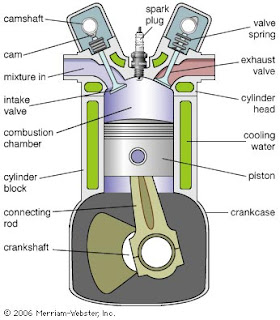Dear auto-enthusiasts, Hello again !
In my last article, I had discussed about the components of the
Engine (ICE) and how they work in a synchronized way to convert heat energy into
mechanical force (Generating Power). During exploring the Otto Cycle, I had told
you that its second step is the “Induction Stroke” in which the
Charge( Fuel+Air) is sent into the Combustion Chamber of the engine. I assume,
most of you already know that the Charge is prepared either by a Carburetor or
a Fuel Injection System. Today, I am going to explain that how both of them
work, where they are best and where they are not so good. Let’s have a look.
OVERVIEW
To generate power efficiently, the fuel should be mixed with
air (oxygen) in such a way that almost all (most of) the fuel present in the
Combustion Chamber is burnt and produce maximum possible power without wasting
any fuel. This can be achieved by some sort of Carburetion technique, such as a
Carburetor or a Fuel Injection System. Whatever the Carburetion technique be,
there should be a source of fresh/dust-free air for it. This is achieved by
using an air filter. This air is then sent into the Carburetion Module to mix
with fuel. The charge so produced is then delivered into the Combustion Chamber
through the Intake Valve. Now let us discuss the different Carburetion
techniques.



